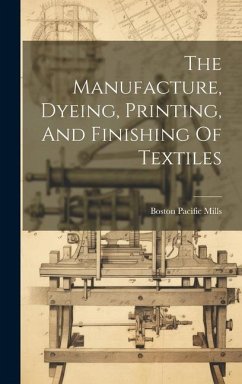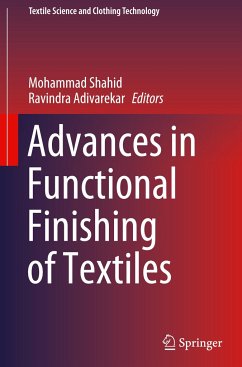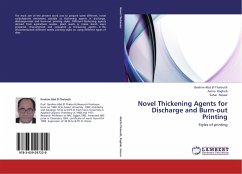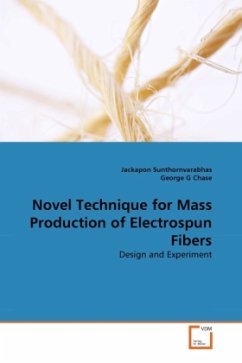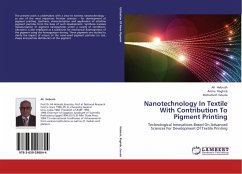
Novel Processing in special finishing and printing of textiles
Novelty in Special Finishing and Printing of Textiles
Versandkostenfrei!
Versandfertig in 6-10 Tagen
44,99 €
inkl. MwSt.

PAYBACK Punkte
22 °P sammeln!
The application of selected reactive dyes and pigments in association with a crease recovery (CR) finish (of the dimethyloldihydroxyehtylene urea type) and a flame retardant (FR) finish (based upon telrakis(hydroxymethyl)phosphonium chloride) were investigated. These finishes were applied prior to the reactive dye and pigment printing, with the aim of producing a process sequence able to give a quick response and enhanced finish and print performance. CR finishing prior to reactive dye printing results in a marked reduction in shade depth, whilst reactive dye printing over the FR finish improv...
The application of selected reactive dyes and pigments in association with a crease recovery (CR) finish (of the dimethyloldihydroxyehtylene urea type) and a flame retardant (FR) finish (based upon telrakis(hydroxymethyl)phosphonium chloride) were investigated. These finishes were applied prior to the reactive dye and pigment printing, with the aim of producing a process sequence able to give a quick response and enhanced finish and print performance. CR finishing prior to reactive dye printing results in a marked reduction in shade depth, whilst reactive dye printing over the FR finish improves the colour strength. FR finishing prior to pigment printing enhances the limiting oxygen index (LOT) values relative to the conventional route. The CR finishing prior to pigment printing would appear to give enhanced cross- linking of the finish and improved crease recovery. However, the loss of pigment print definition was observed. Subsequently, an alternative catalyst systems is recommended. The feasibility of combining pigment print and CR finish application into a single step process is investigated and an acceptable finish formulation.




